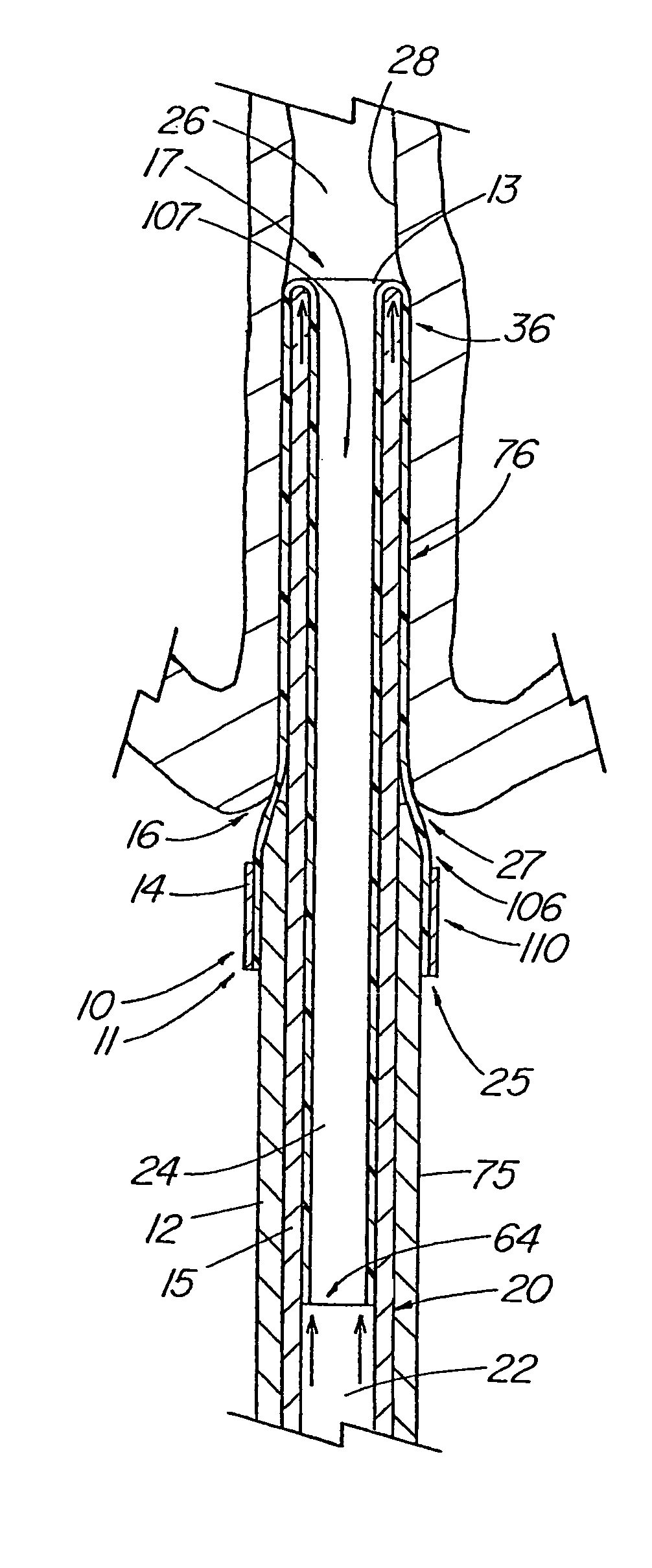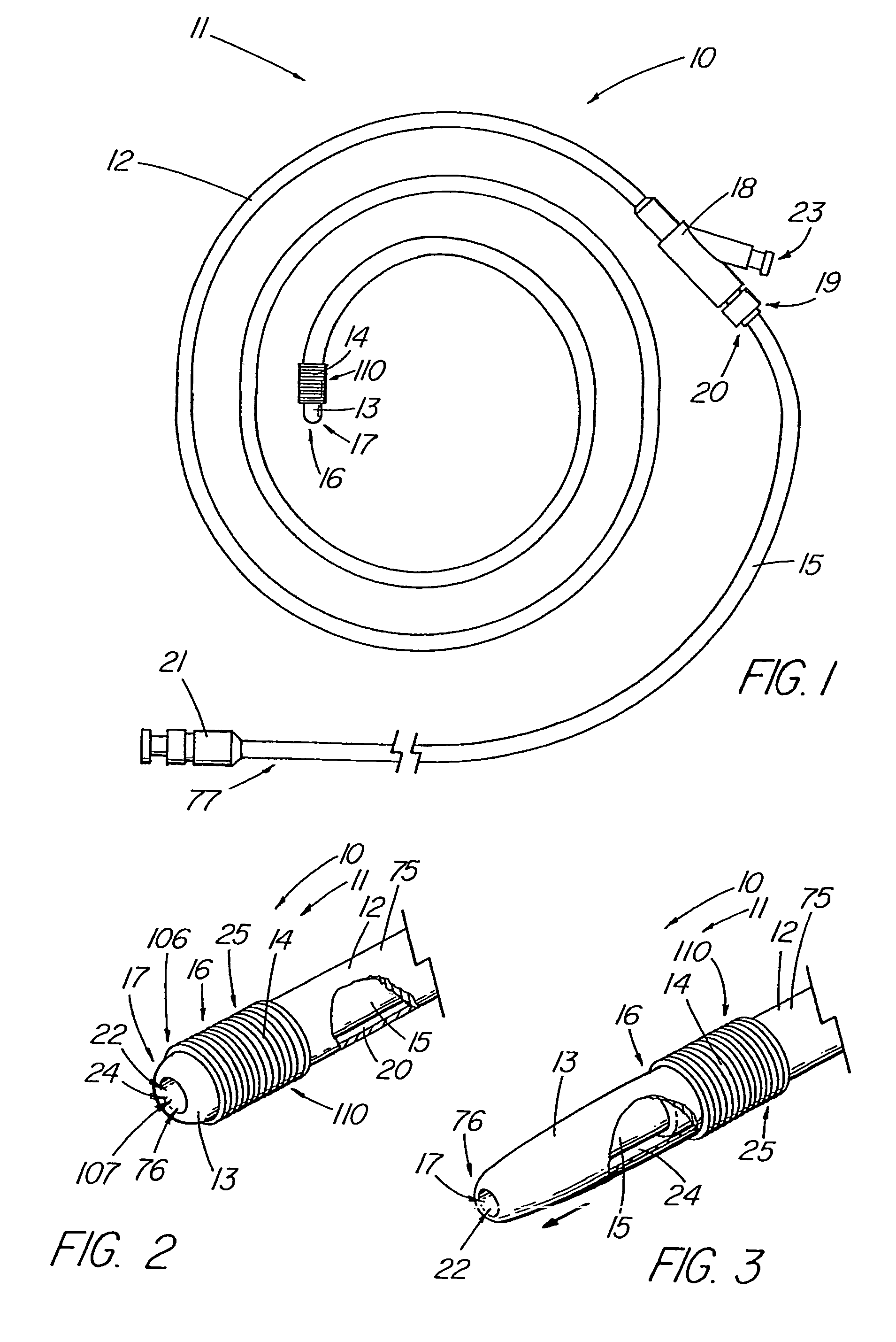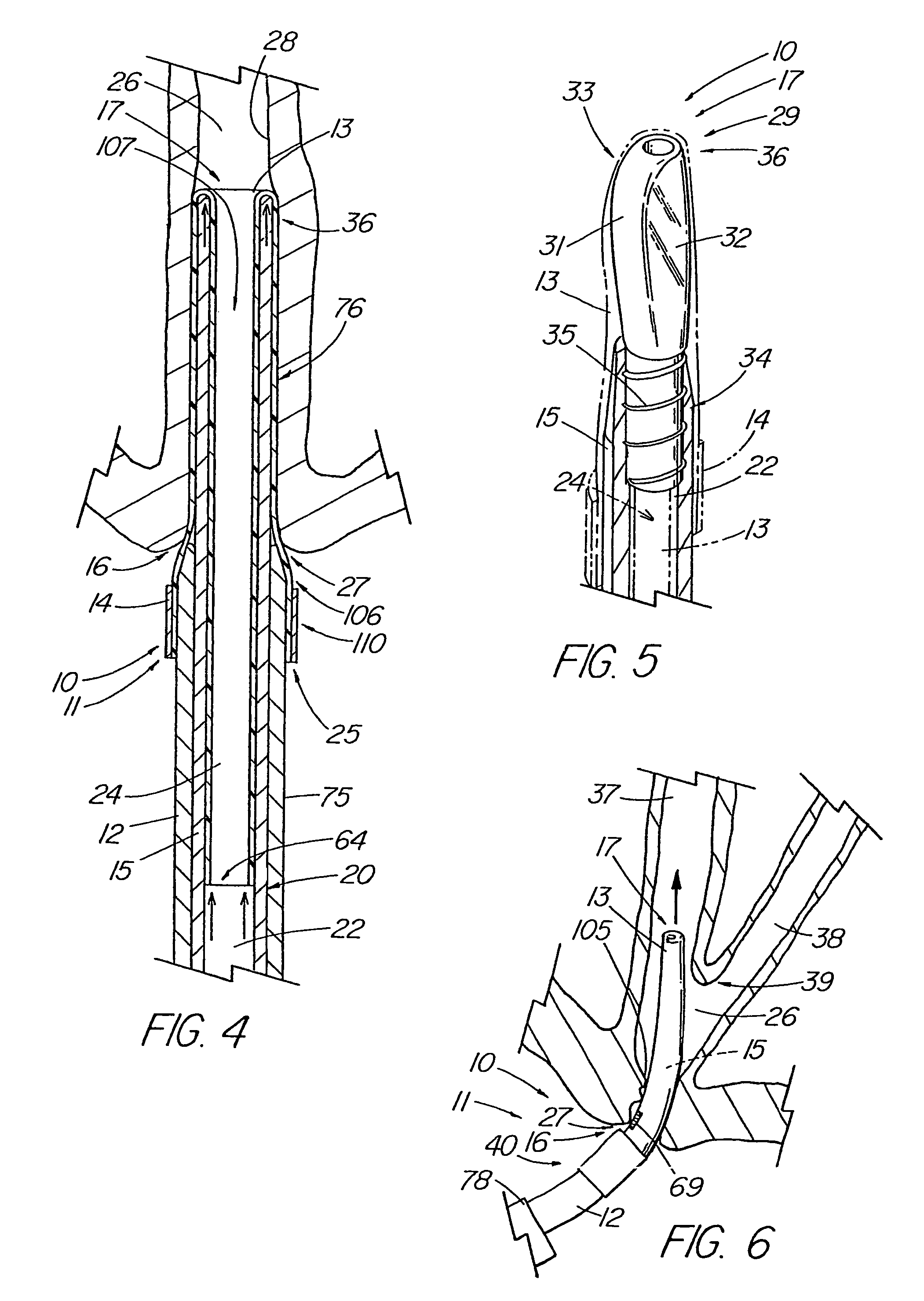Introducer apparatus with eversible sleeve
a technology of a transmitter and a sleeve, which is applied in the field of medical devices, can solve the problems of insufficient degree, subsequent closure of the opening, and patient discomfort, and achieve the effect of reducing patient discomfor
- Summary
- Abstract
- Description
- Claims
- Application Information
AI Technical Summary
Benefits of technology
Problems solved by technology
Method used
Image
Examples
Embodiment Construction
[0048]The present invention comprises an introducer apparatus 10 for reducing friction of a medical device being introduced into a bodily passage 26, a first embodiment of which is depicted in FIGS. 1-4. The introducer apparatus 10 comprises an introducer assembly 11 that includes a sleeve fixation member 12, such as the illustrative introducer member, having a passageway 20 therethrough and a flexible sleeve 13 comprising a body 76, a first end 25 and a second end 64. The sleeve 13 also includes a first portion 106 and a second portion 107 (FIG. 4), with the first portion 106, which includes the first end 25, being attached about the introducer member by an attachment 14 which preferably, but not essentially, affixes the sleeve 13 at one or more attachment points 110 to the outer surface 75 of the introducer member 12 and is fixed against movement with respect to the introducer member 12. Although the sleeve 13 is typically attached to the introducer member 12 at the ‘true’ first e...
PUM
| Property | Measurement | Unit |
|---|---|---|
| length | aaaaa | aaaaa |
| length | aaaaa | aaaaa |
| length | aaaaa | aaaaa |
Abstract
Description
Claims
Application Information
 Login to View More
Login to View More - R&D
- Intellectual Property
- Life Sciences
- Materials
- Tech Scout
- Unparalleled Data Quality
- Higher Quality Content
- 60% Fewer Hallucinations
Browse by: Latest US Patents, China's latest patents, Technical Efficacy Thesaurus, Application Domain, Technology Topic, Popular Technical Reports.
© 2025 PatSnap. All rights reserved.Legal|Privacy policy|Modern Slavery Act Transparency Statement|Sitemap|About US| Contact US: help@patsnap.com



